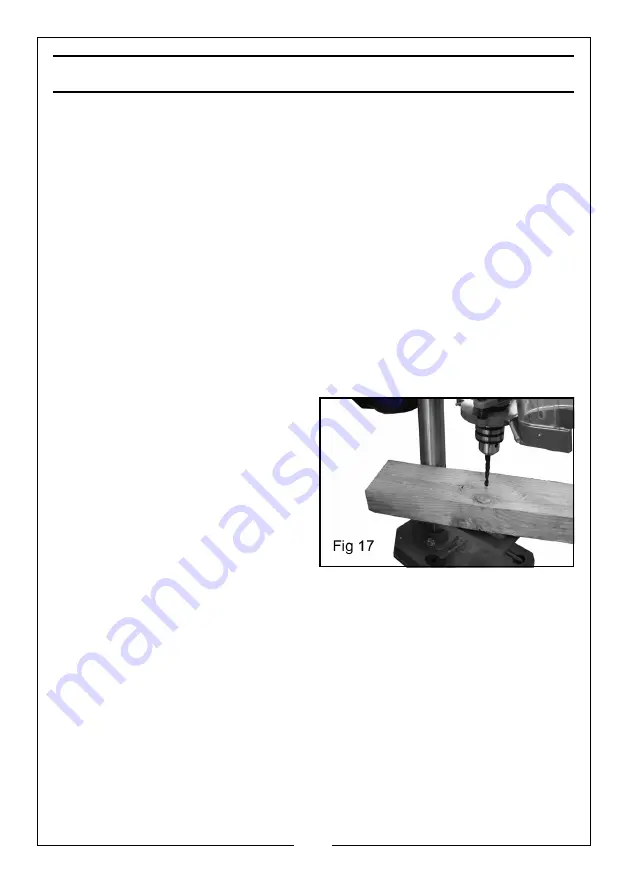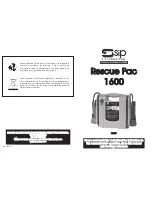
16
Parts & Service: 020 8988 7400 / E-mail: [email protected] or [email protected]
OPERATION
1. Insert the drill bit into the jaws of the chuck by approx 1". Before tightening
the chuck, ensure that the drill bit is centred within the jaws.
2. Ensure the table height and position is set, so that drill travel is sufficient for
the job in hand.
3. Ensure the work is securely clamped or held in a drill vice, bolted to the
table. Never hold it with bare hands. Personal injury may be caused if the
workpiece is whipped out of the operators hand and causing damage to
anything it strikes.
• If the workpiece is an irregular shape and cannot be laid flat on the
table, it should be securely blocked and clamped in position.
• Any tilting, twisting, or shifting, results not only in a rough hole, but
also increases drill bit breakage.
4. For small workpieces that cannot be clamped to the table, use a drill vice.
The vice must be clamped or bolted to the table.
5. When drilling completely through
wood, always position a piece of
scrap wood between the
workpiece and the table to
prevent splintering on the
underside of the workpiece as the
drill breaks through. The scrap
piece of wood must make
contact with the left side of the
column as shown in Fig 17 to
prevent it moving.
6. In addition, set the depth of drill travel so that the drill cannot come into
contact with the table, or align the table so that the hole in its centre is in
line with the drill bit.
7. Form the habit of checking to see that the chuck key is removed from the
chuck before switching on.
Summary of Contents for 6505592
Page 28: ......













































